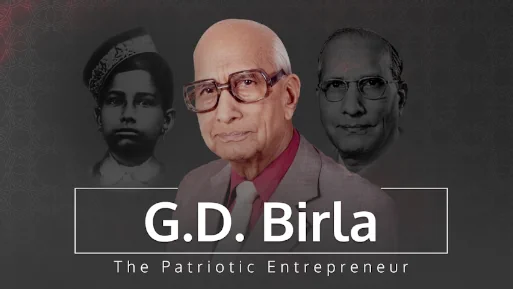Birla plots a growth story amid slowdown
26 September, 2013 | Business Standard
ShareAbhineet Kumar &Vishal Chhabria
Business Standard
26 September 2013
Kumar Mangalam Birla's business has grown steadily in the downturn because of the scale and capacity he has built in the last five years
With the recent announcement to acquire Jaypee Cement's 4.8 million-tonne cement plant in Gujarat, Aditya Birla Group's soft-spoken promoter and chairman,Kumar Mangalam Birla, has takenUltraTech Cementwithin striking distance of its nearest competitor to grab the top slot in the cement sector.
After the deal, UltraTech Cement's domestic capacity will rise to 56 MT, and with more projects underway, the company will reach 70 MT in annual capacity by 2015. Its closest rival Holcim, the Swiss cement maker which controls Ambuja Cements and ACC, will have an annual capacity of 65 MT by then, up from 57 MT now.
Birla's steadfastness in growing the business is reflected in the fact that when he took over the reins 18 years ago, the group's cement capacity was a mere 3.5 MT, way below ACC and Ambuja Cements' 11.5 MT. In the interim, the Birla group companies more than caught up with ACC and Ambuja's capacity. The period also saw Birla growing his group's revenue to over $40 billion from $2 billion.
There has been a lot of action in the group in the last five years after Birla set the goal to more than double revenue to $65 billion by 2014-2015 from $29.2 billion in 2007-08. The economy was on the upswing then, growing at over 9 per cent annually. The group's strategy was to maintain global leadership in what had been its mainstay- viscose staple fibre and carbon black- and gain or retain dominant positions in businesses such as cement, telecom, aluminium and fashion retail in the domestic market.
The group's cement arm, UltraTech, grew its revenues nearly four-fold to Rs 21,319 crore in FY2013 from Rs 5,626 crore in FY2008. Nearly one-third of its present capacity was added around this time, while the company's net profit grew 165 per cent to Rs 2,677 crore in the period. This growth came even as the global economy was going through a meltdown following the collapse of US-based investment bank Lehman Brothers in 2008, and economic growth in India had fallen to its lowest in a decade at 5 per cent in 2012-13. But there was no dampening of ambitions. "We are aiming for the next 20 to 30 years. So, I don't think the aberrations of one or two years will change our ambition," says Birla in an interview following UltraTech's announcement to acquire Jaypee Cement's Gujarat unit.
Spreading business
At Hindalco Industries, expansion is underway to increase aluminium capacity to 1.3 MT by 2013-14 from 0.6 MT in 2008-09. Mahan at Singrauli in Madhya Pradesh, the first metal smelting plant of the $5.5-billion greenfield expansion project, went on stream early this year.
The project also includes a bauxite refinery in Utkal in Orissa to meet the alumina requirement of the Mahan plant and an integrated aluminium production facility called Aditya in Orissa. Both the plants are expected to complete in the current financial year. Hindalco's nets sales increased 34 per cent to Rs 80,192 crore, whereasnet profit grew 37 per cent to Rs 3,026 crore over five years. The growth, though modest, can be considered respectable considering aluminium prices have nearly halvedfrom the peak of $3,271 a tonne in July 2008 to $1,754 a tonne now. The expansion at Hindalco was partly also spurred by billionaire Anil Agarwal-promoted Vedanta group expanding its installed metal smelting capacity to 2.3 MT per annum from 0.34 MT five years ago. While Vedanta overtook Hindalco in terms of installed capacity, Hindalco is likely to overtake it in terms of production by the end of 2013-14 as it plans to soon commission its upcoming facilities. In contrast, Vedanta's 1.25 MT smelting plant in a special economic zone in Orissa has not been commissioned yet as government approvals are awaited.
"He (Birla) realises that he has to build assets which will give him cash and build future," says investment banker VallabhBhansali, founder of Enam Securities which he sold to Axis Bank in 2010. Bhansali knows the group well as he has done business with three generations of the Birla family.
His words ring true for the group's telecom business, Idea Cellular. The mobile-service provider has now become India's 3rd largest operator by revenue from number seven in 2007-08 with a subscriber base of 125 in the quarter ended June 30, 2013, a more than five-fold increase from 24 million in 2007-08. The group invested over Rs40,000 crore in this period in equipment and network as it became a national operator from a regional one. As a result, Idea's net sales grew 233 per cent to Rs 22,407 crore in the five years to 2012-13. Although Idea's net profit declined 3 per cent to Rs 1,010 crore as depreciation costs increased due to high investments in equipment, the company's market value grew 10 per cent to Rs 37,545 crore in the five years. In comparison, BhartiAirtel's market value fell 30 per cent in the period. Last week, Idea overtook UltraTech to become the group's most valued company with a market capitalisation of Rs 53,830 crore.
Cost controls
While expanding at breakneck speed, the group has also managed to keep its costs under control and generate a steady source of revenue. For instance, Hindalco'saluminium trades at a premium to the LME price-the premium ranges up to $200-400 a tonne. The company has also been able to increase the share of value-added products in the portfolio which help in earning higher realisation per tonne.
The company's Renukootaluminium plant is another key source of revenue with Ebidta (earnings before income, depreciation, tax and amortisation) margins of almost $1,000 per tonne. The fully integrated operation-it produces caustic soda (used to make aluminium), has captive bauxite mines, operates refining and smelter facilities and generates power from captive plants- forms the foundation for the company's high (standalone) profitability.
"Due to its low cost of production, even if the last of the plants in the world make losses, this (Renukoot) plant will still be making profits," says Manish Sonthalia, fund manager for MotilalOswal Asset Management Company. If all goes according to plan, Hindalco should be able to double its present Ebitda in the next four years, he adds.
The group has managed to implement stringent cost controls at UltraTech as well. Analysts say since UltraTech's plants were relatively new, consumption of fuel and power was lower, which helped it keep costs low. Power and fuel costs account for 20-25 per cent of net sales. Another factor that has helped in keeping costs low is the pan-India presence of UltraTech. By putting up plants across the country, UltraTech has been able to keep logistics costs under check, leading to over 20 per cent Ebidta margins which is close to those of Ambuja Cements (one of India's lowest-cost cement producers).
Brand power
Like Ambuja, UltraTech has also been able to command better price (Rs 3-4 per 50 kg of cement) because of its brand equity. All this has helped the company increase its cash flow from operations from Rs 1,450 crore in FY09 to Rs 3,660 crore in FY13, which has made funding expansions and acquisitions easier. Notably, the company's debt level is low-net consolidated debt stood at Rs 2,450 crore at the end of FY13, resulting in debt-equity of just 0.16.
Idea Cellular too enjoys strong brand recall. "Sweating of assets has been high for Idea Cellular, leading to high turnover-capex ratio. With cost-efficient operations, it has in turn led to higher cash flows for Idea," says Sonthalia of MotilalOswal Asset Management Company.
Better allocation of capital and focus on enhancing shareholder value among other things have seen the combined market value of the group's listed entities rise 15 per cent to Rs 144,000 crore in the five-year period.
However, there are a few sore points for the group. Birla has not achieved significant success in growing the group's supermarket chain called More. The company entered the business through acquisition of South India-based retail chain Trinethra in January 2007 but has not been able to achieve breakeven yet. In about the same time, MukeshAmbani-promoted Reliance Retail has become the number one retailer in the country and has achieved operational profitability.
In the financial services business, while the group has gained good ground in life insurance and the asset management segments, it is yet to figure among the top three players. As other players in the segment pull up their socks, shareholders will be keen to see how Birla gears up for this challenge.






